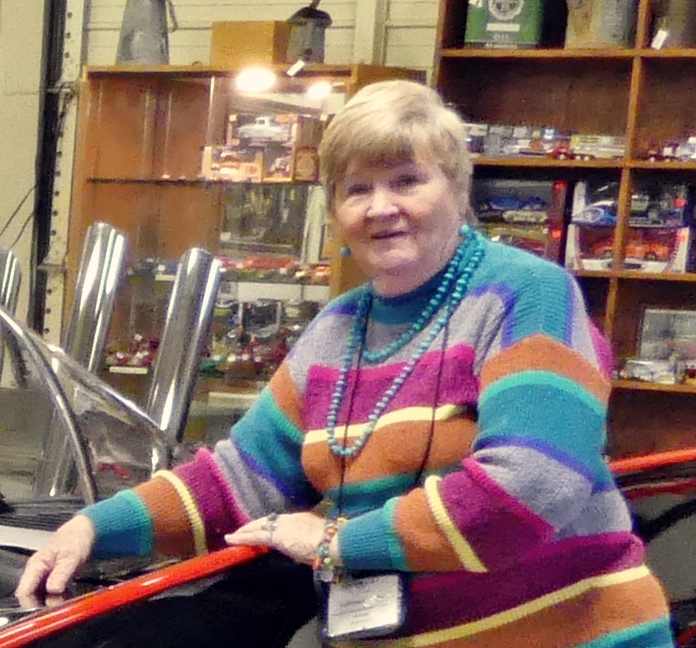Glenn H. Curtiss Museum: A Look Back at Transportation

Red Caboose used for the Champagne Wine Trail Photo: Kathleen Walls
Posted December 13, 2024
The Glenn H. Curtiss Museum in Hammondsport, New York, honors the memory of an aviation pioneer. Much more than a leader in flight, Curtiss began innovation on bicycles, leading to motorcycles and then airplanes. The museum is filled with just about every form of transportation mankind has used and tells not only Curtiss’s story but also the Hammondsport/Steuben County history of transportation.
The Little Red Caboose
A red caboose from the Bath and Hammondsport line, with a small, windowed section rising over the middle of the roof, sits in front of the Glenn H. Curtiss Museum. Its inscription, “The Champagne Trail,” hints at its interesting history. Built around 1915 for the Erie Railroad, the B and H line purchased the caboose in 1938. The usual use for cabooses was as accommodation for train guards, and a place to carry odd equipment and some freight. They also helped with braking on steep inclines. The B & H line had a different purpose for this caboose. They stripped the interior, put a large sliding freight door on each side, and used it to carry freight and federal packages similar to priority parcels today.
B and H retired the car in the 1970s and donated it to the town of Urbana. Ultimately, the Curtiss Museum acquired it and restored it as it would have been in 1940. They added “The Champagne Trail” in honor of Pleasant Valley Wine Company, which produced the Great Western Champagne, an award-winning sparkling wine. The winery was located at Rheims, once a stop on the railway section known as the Champagne Trail.

Antique Sidecar Photo: Kathleen Walls
The History of Bicycles
Step inside the museum and you are surrounded by the antiques of transportation, from early bicycles to planes. There is an 1865 velocipede, several high-wheeled bicycles from the 1890s, and more. Curtiss developed a love of bicycles when he lived in Rochester and worked for the Eastman Dry Plate company. He rode a bicycle to work, and after that, he became a telegram messenger in 1895. He began bicycle racing and soon became a champion bike racer.
By 1901, he looked for ways to speed up bicycles. Along with a partner, Charles Kirkham, Curtiss developed a small single engine motor for bicycles. They sold the motor to existing manufacturers and then he founded the G. H. Curtiss Manufacturing Company to build his own motorcycles. He began making a motorcycle with a wicker chair sidecar – currently on display at the museum.
There are dozens of other motorcycles from the 1900s on display ranging from a bright red 1936 Indian Junior Scout, a1942 military Harley Davidson used in WWII, a 1948 Harley Davidson and many more.
Antique and Classic Cars
From model T’s and A’s on up to cars I remember driving or riding in, the antique and classic cars on display are impressive. There’s even a section of police and fire engines from the early days. It’s hard to pick a favorite here but there are some special ones. A 1914 Ford T Depot Hack is considered a precursor to the station wagon. There’s a 1909 Bruch Runabout Model BC, a single cylinder vehicle with 7 horsepower. And so many more.
Another big innovation is the Curtiss Aerocar, an early RV. Glenn Curtiss developed the Aerocar luxury camper in 1927. Today, only about 12 are known to exist and two are still drivable.

Flying Boat at the Museum Photo: Kathleen Walls
A Pioneer in the Aircraft Industry
Curtiss excelled in the field of aircraft and is considered a founder of the United States aircraft industry. He began manufacturing engines for airships in 1904, and by 1908, he was part of a pioneering research group founded by Alexander Graham Bell to build flying machines called the Aerial Experiment Association.
Curtiss won many awards for his planes, including the June Bug, which he built for the organization. He flew the June Bug a distance of 5,080 feet on July 4, 1908, and won the Scientific American Trophy and a $2,500 prize.
His highest award in the flight industry happened on May 29, 1910. Curtiss flew from Albany to New York City on the first long-distance flight between two major cities in the U.S. The plane he flew, a yellow Albany Flyer, is one of the first planes you see in the museum. That flight earned him a $10,000 prize from Joseph Pulitzer and permanent possession of the Scientific American Trophy.

Depot Hack Photo: Kathleen Walls
More Unique Items on Display
In 1911, Curtiss developed the Model D Headless Pusher biplane, in which the engine was behind the pilot. By 1914, this model was obsolete. Looking at this one on display makes you think of a cross between a big tricycle and a plane.
Many of his other planes are on display. Some of his planes were flown in WWI, like the P-40 Warhawk, one of the first United States fighter planes in service when the war began. The Warhawk engaged Japanese aircraft after the Pearl Harbor attack. They were used in the Philippines in December 1941 and were the chosen aircraft of the famed Flying Tigers, the first African American U.S. fighter unit.
The Seagull Flying Boat he introduced in 1919, right after WWI, was a civilian version of the Curtiss Flying Boats he built for the military.
There are also displays of other items related to Hammondsport, including a 1961 Ordnance cannon, early gas pumps, and a replica of Curtiss’s office. There are also displays related to New York’s wine industry.
Museum visitors are welcome to visit the shop behind the museum where restorations are done.
Click Here for Discounted Accommodations in Hammondsport, New York
Join the community!

Join our community to receive special updates (we keep your private info locked.)




